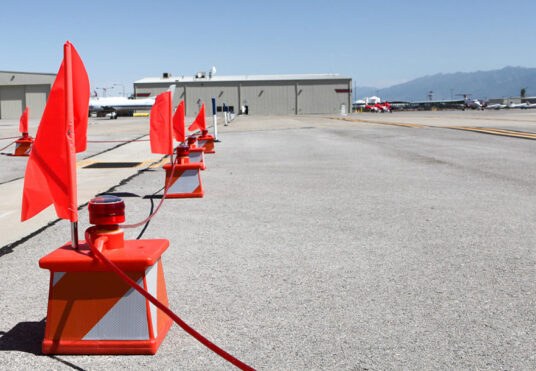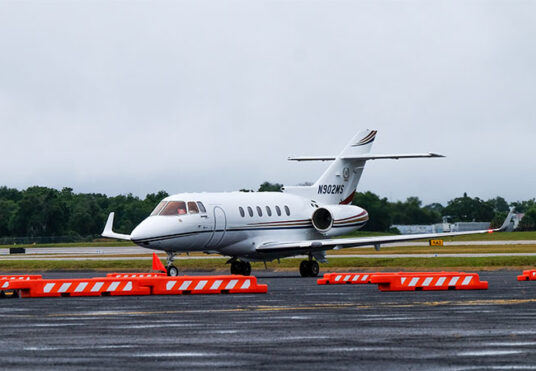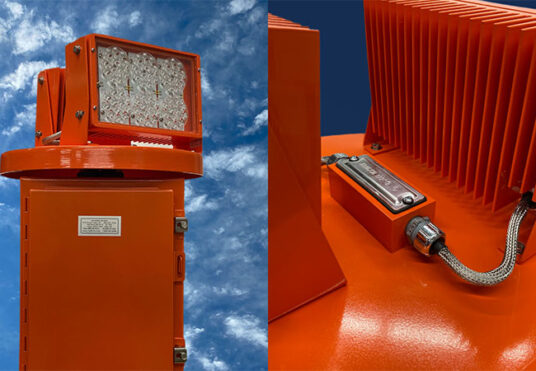Airport Work Zone Lingo – everything you need to know
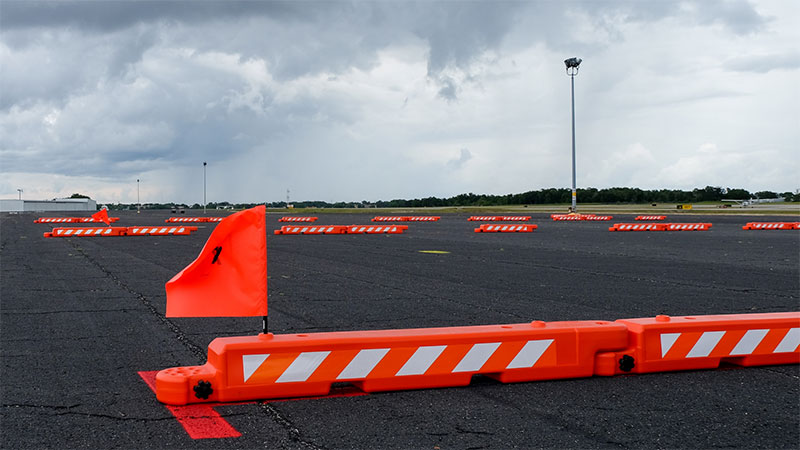
Many phrases and acronyms fly around the aviation industry, and many can be vague or confusing if you’re unsure what is being discussed.
When it comes to an airport work zone, in particular, it is essential to know what is being mentioned so that the highest level of safety can be maintained on and off the airfield. You might hear phrases like FAA, FOD, frangibility, jet blast testing, or runway closure markers… but what are they and what do they mean?
Let’s talk about the most common phrases and acronyms heard surrounding work zones in the aviation industry:
Airport Work Zone Construction Talk
Before the work can begin at any airport work zone, it’s important for there to be a plan in place for each phase of construction. This is where CSPPs (Construction Safety and Phasing Plans) come into play. At the moment, every airport creates its own CSPP based on the most recent version of the Advisory Circular on Operational Safety of Airports (Dubey, 2020). Engineering Briefs (EBs), on the other hand, provide additional helpful information about airport engineering, design, and construction standards and specifications. Together, these are essential to planning, executing, and documenting work and the overall safety of airport construction work zones.
Foreign Object Debris (FOD)
Most commonly known as FOD, foreign object debris essentially includes any object (specifically on a runway) that is not where it is supposed to be. FOD is one of the most dangerous hazards on the airfield, as it can cause dangerous and even fatal accidents. This includes FOD from airport work zones, as they are often in close proximity to still-active runways. Foreign debris on a runway not only creates hazards for aircraft, but cargo, personnel, equipment, and passengers as well and must be eliminated as much as possible.
OTW’s collaboration with the SLC airport addressed lowering the risks of foreign object debris specifically in regard to barricades and barricade flags – our airport barricade flag was designed to create a FOD-free environment by pairing with our (already) FOD-free low-profile airport barricade without any additional fasteners or bolts!
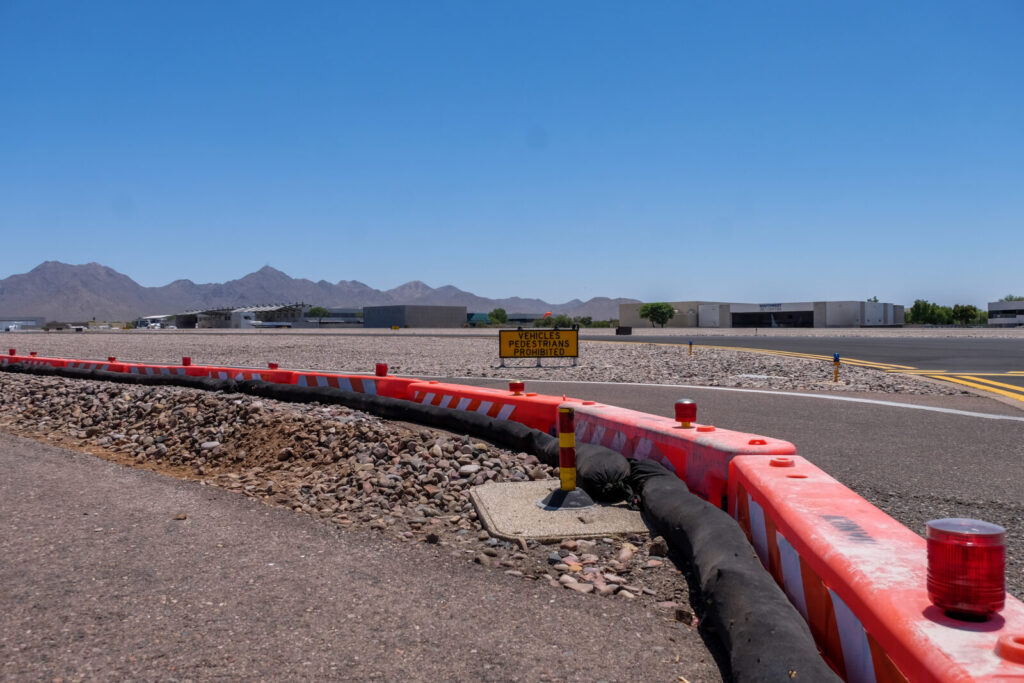
Jet Blast Testing
The regulations the FAA has established help ensure that barricades and equipment used on runways and in airport work zones are safe for use, and that includes compliance with regulations for things such as jet blast testing, appropriate equipment used on runways, and runway closure markers. Jet blast testing, in particular, is important because jet blast speeds from taxiing aircraft can reach high speeds within seconds. This means that anything that is not weighted or heavily secured has the potential to become deadly FOD. Our low-profile airfield barricade was designed with this in mind and is specifically geared to withstand jet blast – and our most recent round of jet blast testing was a great success!
Frangible/Frangibility
Concrete barriers, metal barriers, or railroad ties (all commonly used at airports and in airport work zones in the past) would pose great risk to an aircraft if they were to be run over, so non-collapsible airport construction barricades are no longer allowed on runways. Something that is frangible can be defined as “an object of low mass, designed to break, distort or yield on impact, so as to present the minimum hazard to aircraft” or “fragile or brittle”. This definition, then, is essential to the safety of runways and aircraft alike; when something is designed to break into fragments instead of maintaining its integrity upon collision, the damage to an aircraft is diminished greatly. Other airside structures such as approach lighting, weather equipment, radar systems, and towers are also required to be frangible in order to improve safety standards and decrease potential hazards.
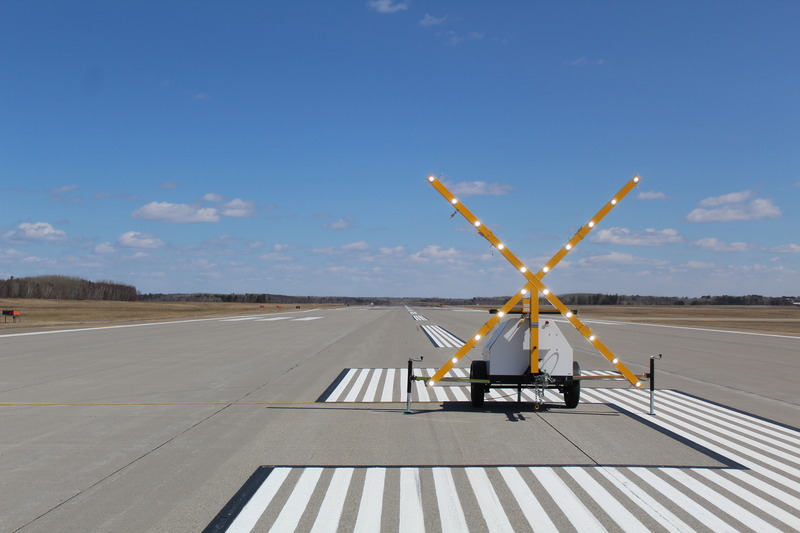
Runway Closure Markers
Runways are often under construction for various reasons: the runway itself might be damaged, the airport might be expanding to keep up with the demand for air travel, or new safety requirements might necessitate change. Whatever the reason, it is incredibly important for runway work zones to be clearly marked so that the runway is not accidentally used. Reports of pilots being unaware of airport construction have ended badly (or nearly so) when runways have been shortened, partially closed, or fully closed due to construction work. Using runway closure markers helps ensure that the affected runway can be seen from the ground and from the sky, thus better avoiding accidents and/or fatalities.
Federal Aviation Administration (FAA)
The FAA is the big kahuna when it comes to the aviation industry – the Federal Aviation Administration. Their mission is to provide the safest, most efficient aerospace system in the world, and they work tirelessly to create the systems, rules, and regulations that help keep the aviation industry the safest it can be. Airports in the US are regulated by the FAA – they “issue and enforce regulations and minimum standards covering manufacturing, operating, and maintaining aircraft”. They also include regulations in regard to airport work zones and how airfields should operate when one is active.
Another way they do this is through Advisory Circulars (ACs): these cheat sheets help with understanding and complying with FAA regulations and offer guidance on many issues in the aerospace field. Additionally, AC can also stand for “alternating current”, which is the type of electrical system found on most multi-engine, high-performance turbine-powered aircraft and transport category aircraft, or you might even see A/C, which stands for “aircraft”.
Many of the phrases or acronyms used within the aviation industry are frequently used by the FAA, so it’s important to know what they are! You might see acronyms such as TLOF (Touchdown and Liftoff Area), ATC (Air Traffic Control), HAZMAT (Hazardous Material), HDQ (FAA Headquarters), and more.
Check out their website for a full list of FAA airport acronyms.
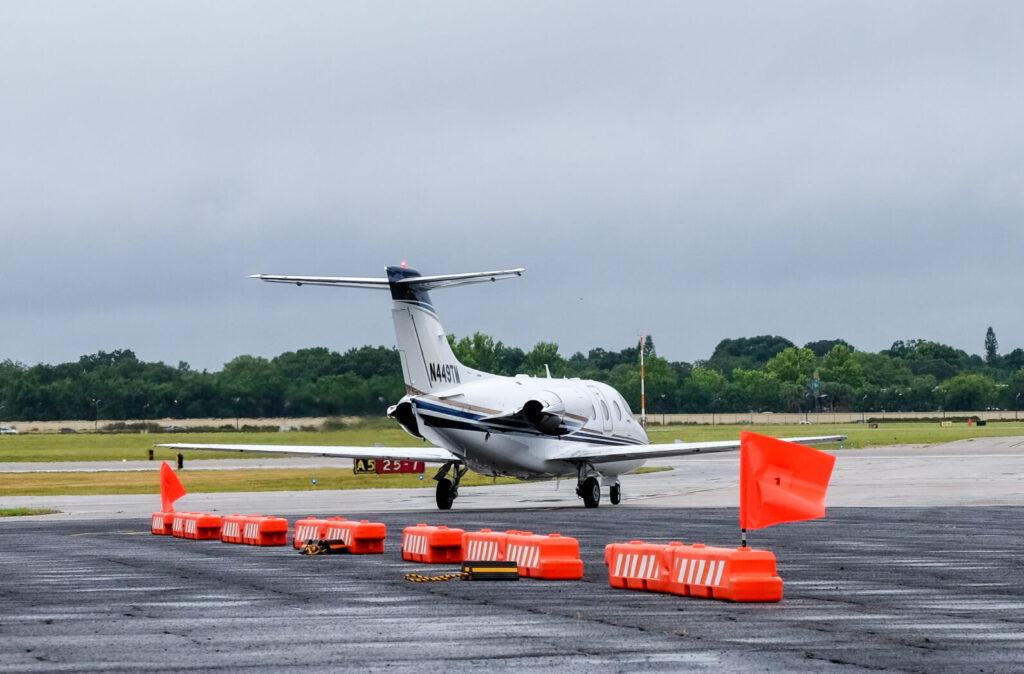
Airport work zones and OTW airport construction barricades
OTW has been a part of the aviation industry for nearly as long as we’ve been in the safety and construction fields, and we are experts in all things relating to safety in airport work zones. Our airport barricades and accessories are carefully designed and manufactured to comply with relevant FAA regulations and we are proud to make the best airport construction safety barricades on the market.
Looking for your own airport barricades? Let’s get started today!
Resources:
Dubey, Nitesh. Michigan State University ProQuest Dissertations Publishing, 2020. 28087297.
